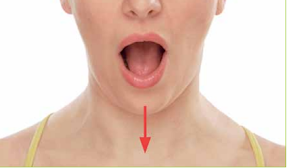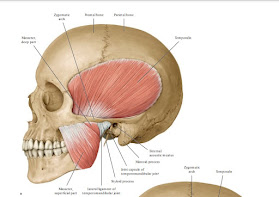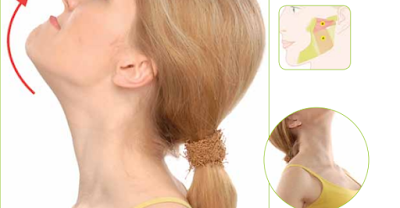JAW MOVEMENT EXERCISES.
INSTRUCTIONS:
• Perform all jaw exercises slowly, carefully, smoothly, and evenly.
• Focus on creating controlled, well-coordinated and fluid jaw movements.
• Maintain good upper body posture with your head aligned while doing the jaw exercises.
• Focus on your jaw and neck. Perform jaw exercises in a relaxed manner. Keep your neck and shoulders relaxed.
• When performing manual jaw resistance exercises, just apply gentle, light resistance with your fingers.
• Repeat each exercise the recommended number of times. You can increase the number of repetitions if you wish.
• All jaw exercises should be painless. They may seem a little strange or cause some discomfort at first, but if an exercise produces pain, decrease the strength or range of motion, or both.
If some jaw movement still causes pain, do not continue to perform it, as the pain may be a symptom of a jaw joint problem requiring further medical evaluation.
CAUTION: Never apply maximum resistance, make sudden, forceful jaw movements, or try to force your jaw to perform movements that exceed the normal range of motion of the jaw joints. Those with a history of jaw dislocation should be careful not to make too wide jaw movements.
1. Coordinated jaw opening exercise:
Place the tip of your tongue against the roof of your mouth behind the front teeth and open your jaw slowly.
Lower your jaw as far as possible while keeping the tip of the tongue up. Hold your jaw in this position for 2 seconds.
Alternate opening and closing your jaw slowly while keeping the tip of the tongue up.
Repeat 10 times.
Health Impact: It helps the straight and smooth downward direction of the lower jaw without any deviation during movement.
2. Basic jaw opening exercise.
Open your mouth by lowering your jaw slowly and evenly as wide as you feel comfortable.
Hold the open position for 2 seconds. Alternate opening and closing your jaw slowly and smoothly. Repeat 10 times.
Health Impact: Improves the function and condition of chewing muscles and jaw joints.
Relaxes the chewing muscles that close the jaw. Helps with speech and swallowing.
3. Resistance jaw opening exercise.
Place your thumbs firmly under the tip of your chin. Open your jaw slowly and resist the opening
lightly and gently with your thumbs. The resistance subtly resists active movement without stopping it.
Health impact: Relaxes the chewing muscles of the jaw. Strengthens the muscles that open the jaw.
4. Combined jaw opening and closing exercise with resistance:
At first, place your thumbs firmly under the tip of your chin. Open your jaw and resist the opening with your thumbs.
Then place your index fingers on your lower anterior teeth and gently resist the closing movement of the jaw.
Repeat 10 times.
The resistance subtly resists active movements without stopping them.
The movements should be slow and regular and the resistance gentle.
Health impact: Strengthens the chewing muscles and the jaw joints. Relaxes the chewing muscles that close the jaw.
Impact on appearance: Tones the cheeks.
5. Basic forward jaw thrust exercise.
Slightly move your lower jaw forward. Hold your jaw in this position for 3-5 seconds. Slowly return your jaw to a resting position.
Repeat 10 times. Concentrate on the movement of your lower jaw without moving your neck.
The average normal movement of the jaw protrusion varies between 7 mm and 12 mm.
Health Impact: Relaxes and stretches the chewing muscles that retract the jaw.
Corrects the bad muscle bite, in which the lower jaw is too far back.
6. Forward jaw push exercise with front neck stretch.
Move your lower jaw forward and then up so that you can extend your lower lip widely over your upper lip.
Keep your jaw and lips together and tilt your head back slightly.
The tip of your tongue is placed against the roof of your mouth and your chest is lifted.
Health Impact: Relaxes and stretches the masticatory retractor muscles of the jaw and the front muscles of the neck.
Impact on appearance: Tones the jaw. Prevents and softens neck creases.








